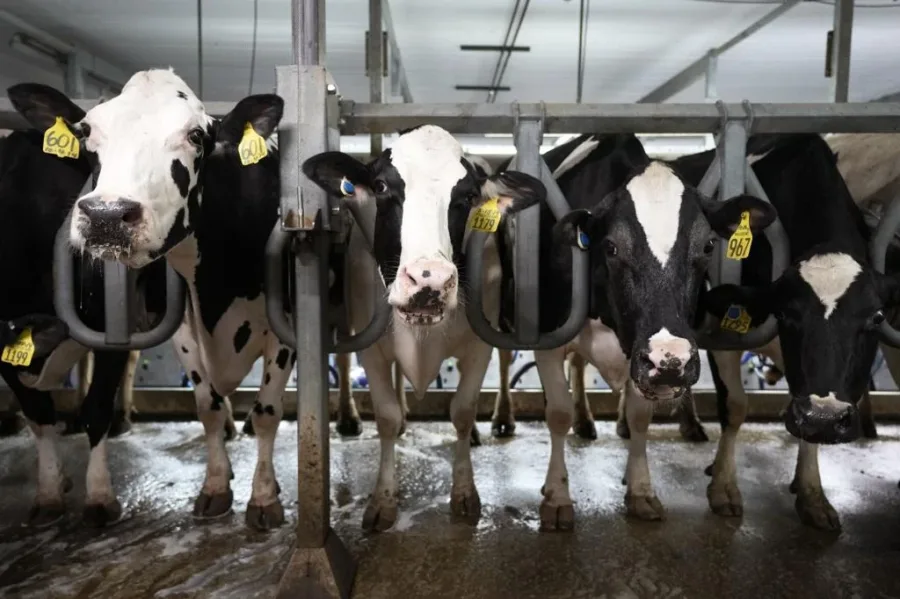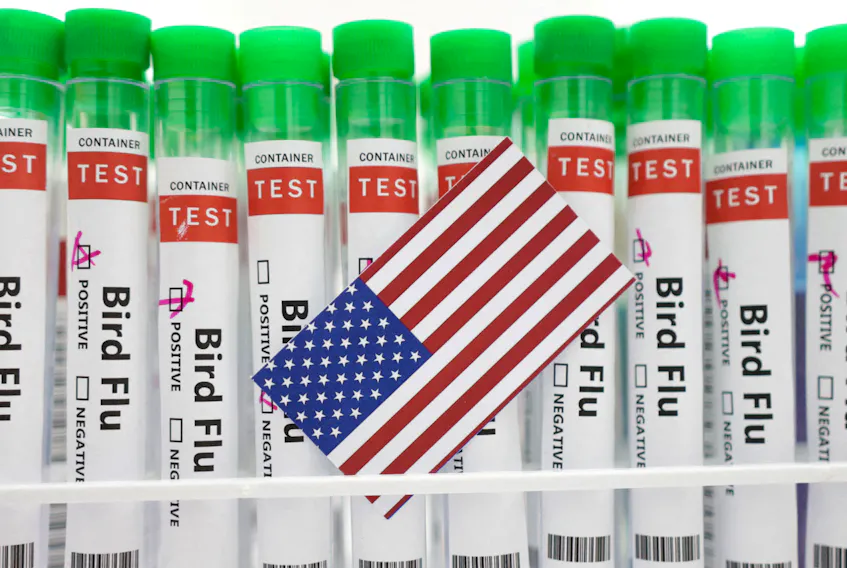Can US dairy farms curb bird flu’s spread? Discover how 24 companies are racing to develop a vaccine and the USDA’s efforts to protect herds and farmers.

According to the USDA, the outbreak of bird flu is wreaking havoc among American dairy herds, infecting 90 farms spread over 12 states since late March. This highly pathogenic H5N8 bird flu strain, known for its high mortality rate in birds, poses a significant threat to the dairy industry. If it spreads to new species, such as humans or other livestock, the consequences could be catastrophic. There never has been more urgency for a vaccination. With the USDA also doing research in Ames, Iowa, twenty-24 companies are sprinting to create an avian flu vaccination for cattle. For dairy producers threatened with possible economic losses and virus spread to new species, this cooperative effort provides hope and a race against time.
“For dairy cows, it’s about cows moving, people, vehicles, and equipment carrying the virus without realizing it,” said Agriculture Secretary Tom Vilsack in an interview with Reuters, not about migratory birds.
The fight against bird flu is a collective effort that underscores the industry’s determination to overcome this challenge. For dairy producers, this could mean improved biosecurity and a release from the bird flu threat. The ongoing research and development of vaccination and the implementation of biosecurity measures present a crucial opportunity to stop the epidemic and safeguard the dairy sector.
A Widespread Challenge: US Dairy Farms Deal with Bird Flu Outbreak
The bird flu outbreak is wreaking havoc on US dairy farms, with the USDA reporting that ninety dairy farms across twelve states have been hit since late March. This highly pathogenic H5N8 bird flu strain, known for its devastating impact on bird populations, is now threatening the dairy industry. The outbreak has led to a significant decrease in milk production and a potential loss of [insert specific amount], painting a grim picture for the industry. The rapid and widespread spread of the virus has left health officials and farmers deeply concerned.
The bird flu outbreak is not just a threat to the dairy industry, but also to human health. Two cases of human infections among dairy farm workers in Michigan and one in Texas have been recorded, serving as a stark reminder of the potential risks associated with the bird flu outbreak. If the virus continues to spread, it could lead to a significant increase in human infections, potentially causing a public health crisis. These events underscore the urgent need for strong actions to stop and control the bird flu epidemic.
24 Companies and Counting: a Multidimensional Strategy to Fight Bird Flu
Twenty-four businesses are complex at work, addressing the bird flu issue from several angles. While some are headed toward field testing and regulatory review, others are in the early stages—that of lab research and animal trials. This variety emphasizes several initiatives that aim to prevent viruses.
In a joint effort with twenty-four private companies, the USDA is playing a pivotal role in the development of avian flu vaccination. Their research, conducted at an Ames, Iowa lab, is focused on finding a viable vaccination candidate. This collaborative approach, with businesses and the USDA working hand in hand, is a beacon of hope in the fight against bird flu. It provides a solid foundation for the industry’s efforts to combat the virus.
This quest is a painstaking scientific investigation meant to guarantee the vaccine’s safety and success. The USDA is also looking at respiratory spread and increasing farm biosecurity, which will help initiatives against bird flu.
Negotiating the Maze: The Difficult Path Towards Creating a Cow Bird Flu Vaccine
Creating a cow’s bird flu vaccination is no easy chore. The process highlights an unclear timeline, which can take months or even years. Declaring, “That could happen tomorrow, or it could take six months, or it could take a year,” Agriculture Secretary Tom Vilsack underlined the difficulty.
It is more than just time. Developing a vaccination to prevent avian influenza in cattle calls for extensive study and testing. The USDA is searching for a vaccine candidate to test for safety and efficacy.
Mass-producing and distributing the vaccination adds yet another level of challenge. Scientific and operational obstacles make the timeline difficult to pin down, even with the best efforts to accelerate events. This uncertainty presents actual difficulties for researchers and dairy producers.
Strengthening the Frontlines: Strong Biosecurity Policies Guide the Defense Against Bird Flu on Dairy Farms
Strong biosecurity policies are the key to halting the spread of bird flu. Controlling the movement of people, vehicles, and equipment is the cornerstone of these initiatives. This means ensuring every visitor and employee adheres to strict hygienic standards, including cleaning clothes and shoes. Vehicles and shared equipment must be thoroughly cleaned and sterilized to prevent the virus from spreading. The health of dairy herds and the containment of bird flu depend on these actions, empowering each individual in the industry to contribute to the solution.
Adequate Transportation: The USDA’s Creative Pilot Program for Bulk Milk Testing Launches
The USDA is starting a pilot program for bulk milk testing in order to address bird flu in dairy farms. This program seeks to streamline the virus detection and management process. The goal: allow healthy herds to move across state lines more easily by testing bulk milk samples instead of individual cows. For farmers, this cuts logistical difficulties and saves time, offering a promising solution to the current challenges.
With this program, state vets and farmers will get faster, more reliable test results, ensuring virus-free herds are transported. This helps maintain the health and productivity of dairy farms nationwide. Michigan and Idaho are already interested, paving the way for widespread adoption.
The Bottom Line
The recent bird flu outbreak has challenged the US dairy industry, impacting many herds across multiple states. The joint efforts of 24 companies and the USDA highlight the urgent need for an avian flu vaccine for cattle. Although vaccine development may take time, strong biosecurity measures are crucial to stop the virus spread. The USDA’s pilot program for bulk milk testing is another proactive step in managing the situation. Continuous research and a commitment to farm biosecurity offer hope in controlling this extensive issue.
Key Takeaways:
- Bird flu has infected 90 dairy herds across 12 states since late March.
- The USDA is collaborating with 24 companies to develop a bird flu vaccine for cows.
- Biosecurity measures and minimizing the movement of people and equipment are critical to controlling the spread on dairy farms.
- The USDA is conducting its own preliminary research into a bird flu vaccine at its laboratory in Ames, Iowa.
- A pilot program for bulk milk testing is being rolled out to streamline virus detection and management among dairy herds.
- Three dairy farm workers, two in Michigan and one in Texas, have been infected with bird flu.












